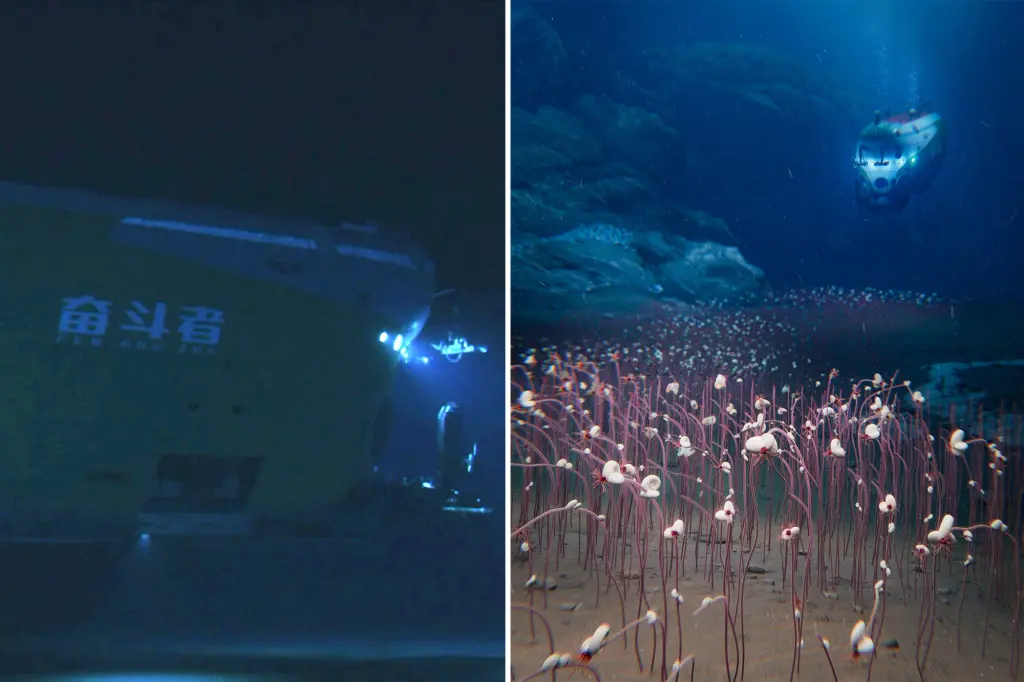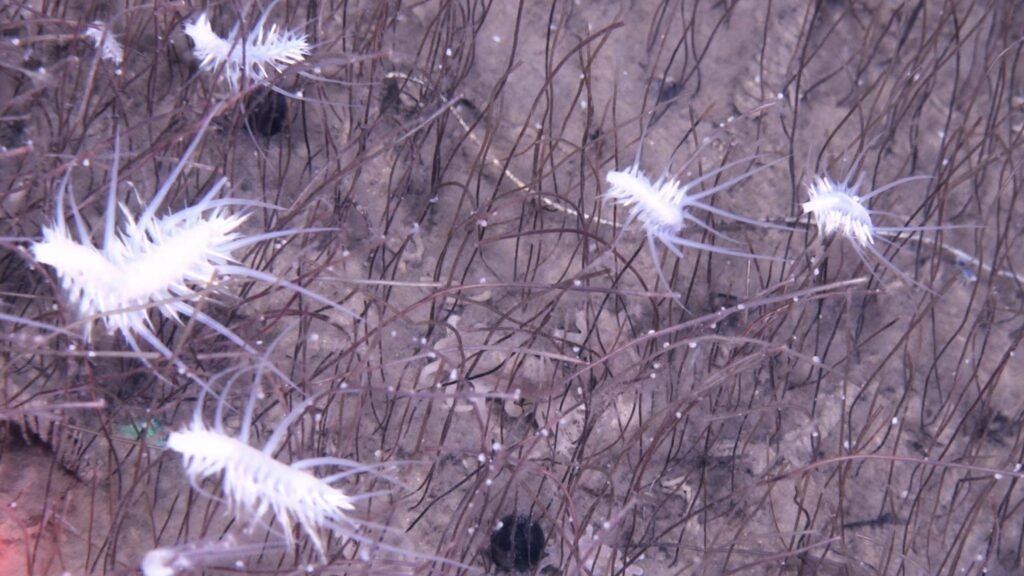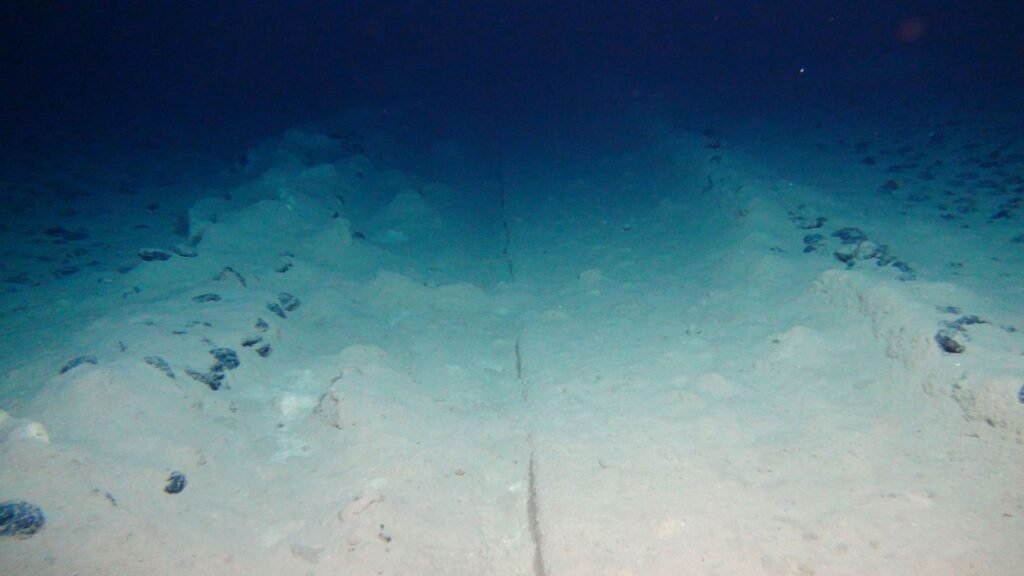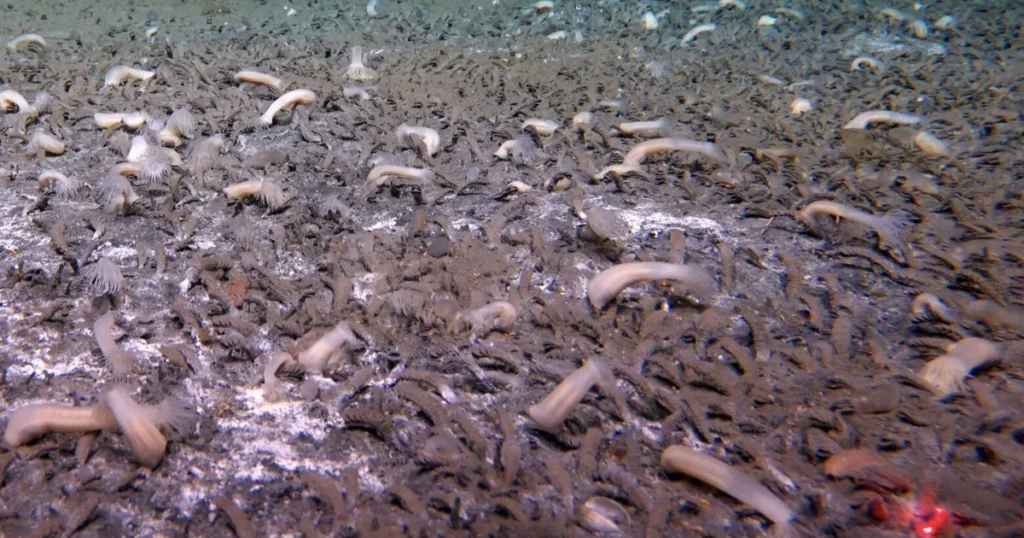Extreme Life in Deep Ocean: Mysterious Ecosystem Discoveries Unveiled

In a groundbreaking expedition, scientists have revealed the existence of vibrant, mysterious ecosystems teeming with extreme life in deep ocean trenches. These new insights challenge previous beliefs about the capacity of life to thrive in the pitch-black, high-pressure zones of the deep sea.
Exploring 9,000-Meter Trenches for Extreme Life in Deep Ocean
Using a human-occupied submersible named Fendouzhe, a research team led by the Chinese Academy of Sciences ventured into the oceanic trenches of the northwest Pacific. The submersible, capable of diving deeper than 10 kilometers, allowed scientists to reach unprecedented depths—beyond 9,500 meters (over 5.9 miles).
During the mission, which covered more than 2,500 kilometers of ocean floor, the team filmed and photographed creatures living in conditions previously thought to be nearly inhospitable.
Extreme Life in Deep Ocean Thrives in Total Darkness
Among the most astonishing finds were dense colonies of long, slender tube worms—some reaching up to 30 centimeters in length. These tube worms, along with molluscs and free-swimming polychaetes, formed what scientists described as “thriving communities.” The seabed was dotted with fields of life, including bacteria mats that resembled icy patches and pinkish-white clams nestled in sediment.
Chemosynthesis: Life Without Sunlight
What makes these deep-sea ecosystems remarkable is their reliance on chemosynthesis—a process that allows organisms to derive energy from chemicals like methane and hydrogen sulfide, rather than sunlight. These gases seep out through cracks in the Earth’s crust, creating a fuel source for microbes, which in turn support larger life forms like molluscs and tube worms.

These chemical-fueled communities demonstrate that life can exist independently of the sun, relying entirely on geological and chemical activity deep within the Earth.
Never-Before-Seen Species and Adaptations
The team documented several species never previously recorded. The discovery of Macellicephaloides grandicirra, a spiky white creature found among the tube worms, is just one of the expedition’s many surprises. These organisms exhibit unique adaptations that enable them to survive crushing pressure and complete darkness.
One of the lead researchers, Dr. Xiaotong Peng, emphasized the significance of these observations: “What we saw was truly remarkable—an abundance of life in a world that had never before been explored.”
Life Under Pressure: The Next Scientific Puzzle
Another fascinating aspect of this deep-sea life is its apparent ability to withstand extreme pressure—conditions that would obliterate most known forms of life. As Dr. Megran Du noted, one of the expedition’s next goals is to understand the biological “tricks” that allow these creatures to endure such an environment.

Understanding how these organisms metabolize toxic chemicals and survive intense pressure may yield groundbreaking insights into biology, biochemistry, and even the search for extraterrestrial life.
A New Understanding of the Deep Ocean
These findings are reshaping long-held assumptions. Far from being barren or sparsely populated, the deep ocean may host widespread ecosystems fueled by chemical energy. Such revelations have immense implications not only for marine biology but also for our broader understanding of Earth’s biosphere.
According to senior marine scientists, the presence of methane-driven ecosystems in the deepest oceanic trenches suggests a far more complex and interconnected deep-sea world than previously imagined.
The Emotional Impact of Deep-Sea Exploration
For the scientists involved, descending into the uncharted depths of the ocean was not just a scientific endeavor, but a deeply emotional experience. Being among the first humans to observe such untouched life forms was awe-inspiring and humbling.

As they gazed through the submersible’s windows into the darkness, they witnessed a hidden universe—one alive with strange, beautiful creatures, perfectly adapted to an environment devoid of light yet rich in life.
Final Thoughts: A Hidden World Comes to Light
This pioneering exploration has illuminated a vibrant underworld that challenges how we define the limits of life. The discovery of extreme life in deep ocean trenches proves that even in the harshest corners of our planet, ecosystems not only exist—they flourish.
Future missions will likely uncover more of these astonishing life forms, offering new perspectives on resilience, adaptation, and the extraordinary diversity of life on Earth.




